‘Knowledge Is Power’ Is True Now More Than Ever
ALEXANDRIA VA.—I first heard the saying “nothing is more permanent than change” when I was a boy, (60 or so years ago). It didn’t really hit home then, but certainly does now in the second decade of the 21st century, especially in the field of broadcasting. There have been lots of changes since I first got involved in broadcast engineering. This was driven home in a big way recently when I audited a day-long course on IP-television offered by the IEEE’s Broadcast Technology Society and taught by Wes Simpson (who also pens the Video Networking column for TV Technology).
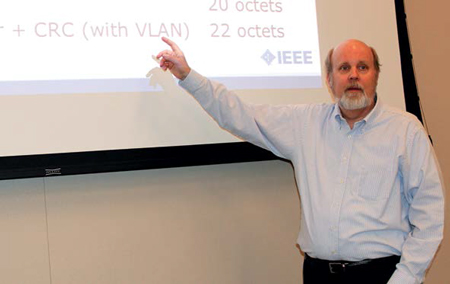
Wes Simpson teaches a course on IP technology for television for the IEEE-BTS. The class—“IP Video for Broadcast Engineers”—provided a detailed overview of the melding of the video and computer worlds, and covered such things as data transport, packet addressing, encapsulation, video streaming, digital rights management, content encryption, video “players,” and much, much more (remember, this was a day-long exposure to the realm of IP video).
At the end of the session, I couldn’t help but feel a bit overwhelmed at the amount of detailed data-handling knowledge that an individual needs nowadays to maintain relevance and employability in this hybrid SDI/IP video arena to which we’ve now moved.
My own broadcast engineering career began in the mid-1960s and a lot was happening then too. The public had started to accept color TV and stations that had been monochrome-only were ordering color cameras, videotape recorders and associated gear. The move from vacuum tube-driven to transistorized equipment was also in full swing. There was also talk about a revolution that was going to take place with the introduction of something called the “chip” and “digital logic.” However, there really wasn’t much evidence of this then; analog gear worked just fine, did everything we needed it to do and was fairly easy to understand and troubleshoot when it failed. Computers? Forget them; they were big, incredibly expensive, and something that really big companies and governmental agencies such as General Motors and NASA owned. Maybe there would be a place for them in broadcasting someday at the bigger stations and networks, but only in the traffic or business departments where a lot of records had to be managed.
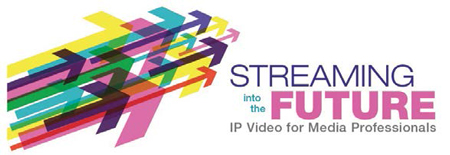
AN EARLY REALIZATION
I figured that since I’d more or less mastered transistors, video and NTSC color by then and knew how to register and balance a camera, time signals to a switcher, align an encoder, change out a klystron, set up a VTR, tune a transmitter, line up a microwave shot, read a “scope and solder,” I could sort of coast along without having to stick my head in a book or go back to a classroom again.
Was I ever wrong!
Even before I could get comfortable in the solid-state environment, a particularly interesting manifestation of the “chip” thrust itself upon us—digital logic gates, and ultimately microprocessors.
The professional video industry's #1 source for news, trends and product and tech information. Sign up below.
There was no choice; I had to return to the library and classroom if I wanted to maintain marketable skills in the field I’d chosen. I was already subscribing to Broadcast Engineering and BM/E (Broadcast Management/Engineering) and reading every page (there was no TV Technology then).
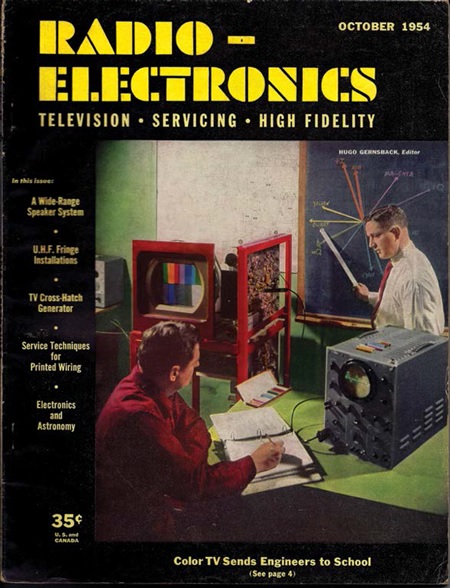
The need for continuing education in broadcast technologies is nothing new as witnessed by this 62-year-old Radio-Electronics cover story, “Color TV Sends Engineers to School.” It was about this time that I joined the SBE, IEEE, and SMPTE, and started receiving their publications. That’s when it really hit home how fast things were moving in a field that I thought was well-established and stable (technology-wise, anyway).
From then on I made a special effort to take advantage of every sort of technical education opportunity that I could find and work into my schedule (and personal finances; TV stations—at least the ones I worked for—weren’t really big on funding tech training then).
Looking back across the last four or five decades, the television industry has witnessed some really profound changes—ENG, satellite connectivity, all-digital operations, the end of videotape recording, just to name a few—and we’re now moving very rapidly into an all-IP environment.
Fortunately, there are plenty of resources for learning about these new technologies and keeping up-to-date.
One of these is the aforementioned IEEE Broadcast Technology Society. That organization has always placed a high value on continuing education and in addition to offering the “IP for Broadcast Engineers” seminar, had previously developed “Bridging the Gap,” a course designed to help close the knowledge void existing between video and data processing/computer networking technologists. The BTS has also for a long time offered timely day-long tutorial sessions in conjunction with its annual Fall Symposium.
SOCIETY OF BROADCAST ENGINEERS
Another organization that has been helping broadcast engineers and technicians cope with the ever-changing technical landscape for a long time is the Society of Broadcast Engineers. The SBE sponsors the Ennes Workshops held in conjunction with the annual NAB Show and has been doing so for a quarter of a century now. These day-long sessions are tailored to bring attendees up to date on the latest developments in broadcast technology. Fred Baumgartner is organizer of these Workshops and a trustee of the Ennes Educational Foundation Trust.
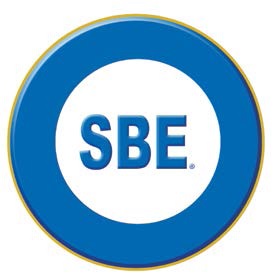
“There is kind of an ecosystem when it comes to continuing education for broadcast engineers. SMPTE and IEEE produce standards documentation that the SBE carries to their members in a practical, hands-on, ‘under-the- hood’ manner,” said Baumgartner. “Over the years, the SBE has published books and magazines, and taken advantage of distance learning tools and the world-wide web. More important, the SBE maintains an accredited certification process for broadcast engineers, which is recognized throughout the industry.”
This year’s Ennes Workshop at the NAB Show will focus on the emerging ATSC 3.0 digital television standard, with other sessions in recent years providing information on such topics as ENG transmission, lightning protection and grounding, codec design, RF filters, automation, transmitter remote control, social media and broadcasting, EAS, tower lighting and more. These are presented by such industry experts including Belden’s Steve Lampen, John Naylor, Shively Labs’ Bob Surette, and Vislink’s Kevin Dennis.
The SBE also sponsors regional workshops that deliver information about broadcast technology developments to those unable to attend the Las Vegas seminars.
“Only about five percent of broadcast engineers have the opportunity to attend the NAB Show,” said Baumgartner. “We recognized this and started our regional program with full-day tutorials offered around the U.S. Ennes underwrites the production of the educational material used and organizes scholarships. We feel that this is essential in this age we live in.”
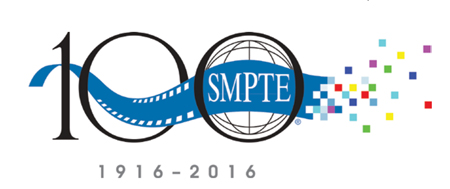
Wayne Pecena, education committee chair for SBE, echoed Baumgartner’s thoughts about the place of their organization in keeping the skill sets of broadcast engineering personnel current.
“Learning is a continuous process for the broadcast engineer,” said Pecena. “Continuous learning is a key trait of the successful technology professional,” adding that “there is no single ‘right’ education program platform. SBE programs range from Ennes Workshops, online webinars, SBE University online courses, and in-person instructor-led tutorials. The field is diverse and so are the education needs.”
Pecena observed that the educational programs offered by the SBE were designed to complement rather that to compete with those from other organizations such as the IEEE and SMPTE.
“The SBE focus is on the working broadcast engineer with practical skills and knowledge,” he said.
Pecena also noted that the SBE will be soon release a new SBE Engineering Handbook, which was created to shed light on the new technologies that have arisen in broadcast engineering community.
SMPTE
Another organization with a great interest in keeping the television engineering community update on the latest technologies through educational opportunities is the Society of Motion Picture and Television Engineers.
“With the rapid pace of technological change in the media and entertainment industry, the challenge to stay on top of new technologies is more difficult than ever,” said Joel Welch, SMPTE’s director of education. “It is crucial for organizations such as SMPTE to grow our educational offerings to help our members, and the industry at large, acquire relevant knowledge. Education is central to the Society’s future. Section programs like ‘Bits by the Bay’ and [other] Section events provide a great number of local educational opportunities [and] to reach a more global audience, SMPTE offers several series of technology focused webcasts and virtual courses. Each of these services is a key component to the Society’s education strategy.”
OTHER EDUCATIONAL OPPORTUNITIES
In addition to the formal technology updates offered via these professional societies, there are other ways for members of our profession to stay up-to-date. One is by attending the regular IEEE, SBE and SMPTE local section and chapter meetings of these organizations. These are typically open to non-members and often feature programs involving new and developing broadcasting technologies. Another possibility is via “road shows” offered by some equipment manufacturers. Tektronix is one of these with a number of all-day “Video Insight” seminars that are conducted across North America and offered free-of-charge to anyone wishing to sign up. The focus is on new video and audio technologies in broadcasting and how to deal with them. Tektronix keeps several presenters on the road in connection with these programs. One of these is Karl Kuhn, a senior video application engineer at Tektronix.
“The industry is going through major technology changes,” said Kuhn. “So staying current is a challenge and more important than ever. If you are not learning something new every day you are becoming more obsolete every day.”
DON’T GET COMPLACENT
Looking back at what’s now close to 50 years in the broadcast engineering profession, I would certainly agree with Karl. Technology rushes on; nothing stands still. It’s like the story about painting that long bridge; just as soon as you think you’re finished, you find that you have to start all over again.
I hope to see you in one or more broadcast engineering-related educational activities very soon!
